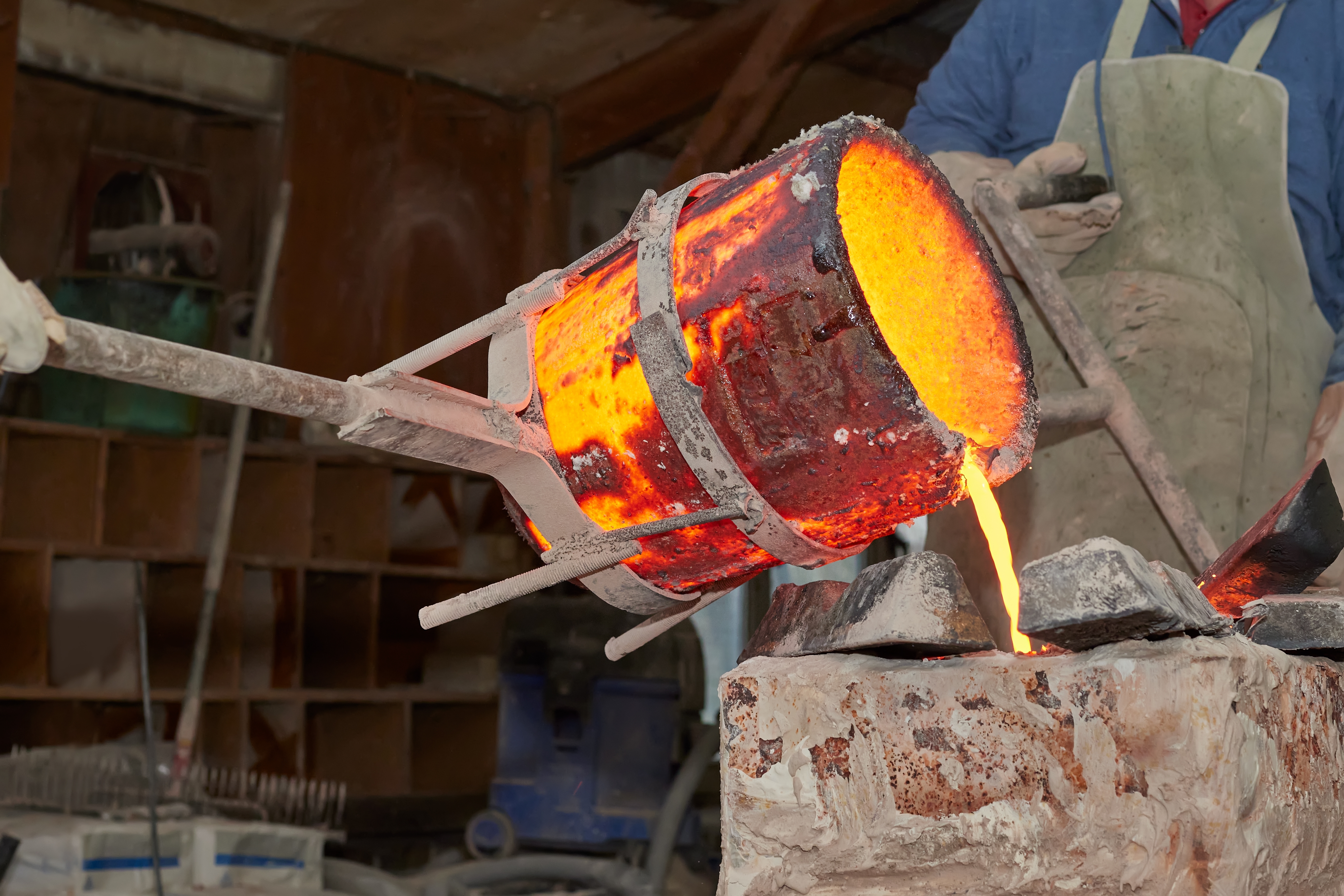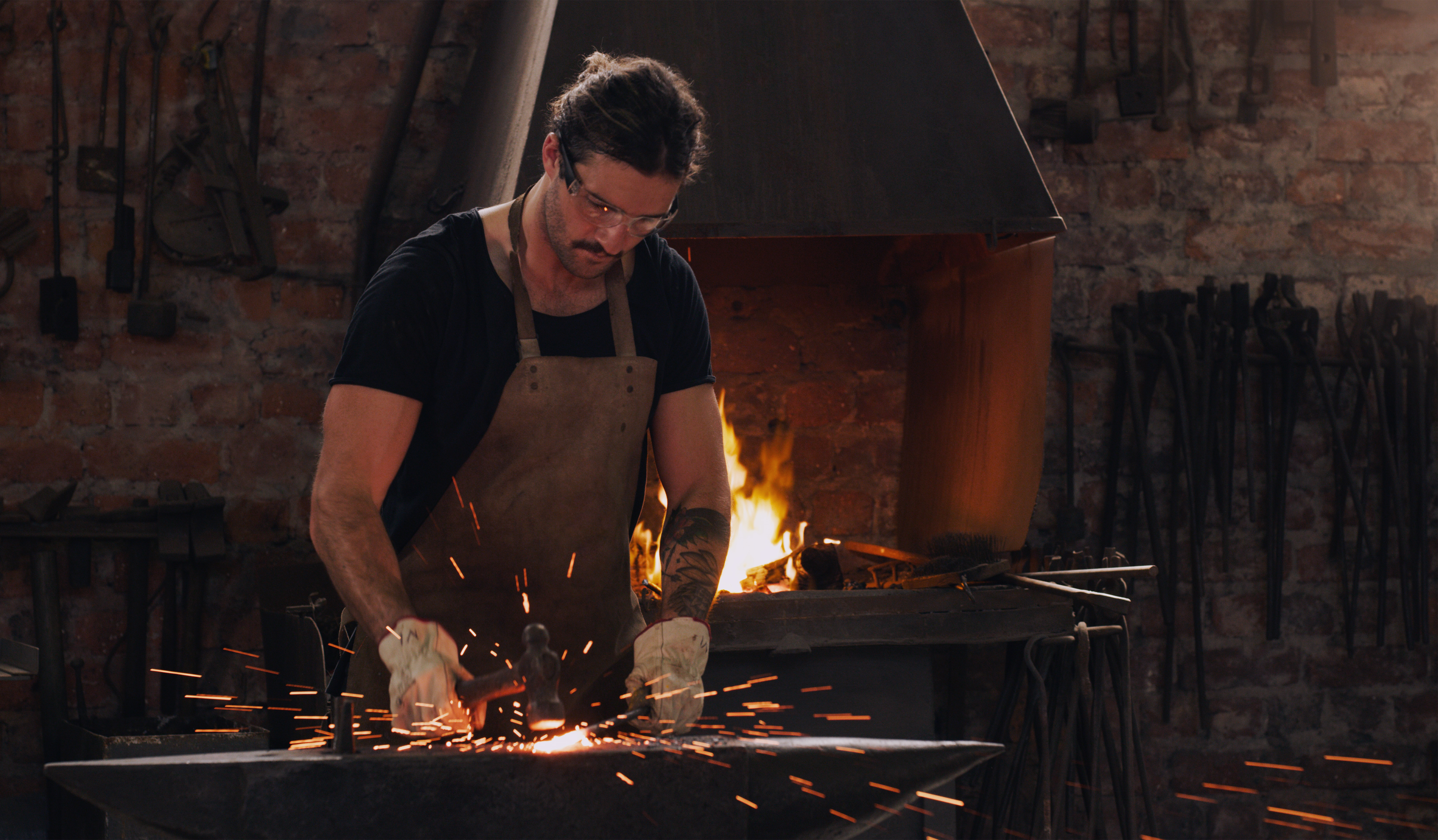Introduction
Bronze has been a crucial material for thousands of years, prized for its durability, corrosion resistance, and aesthetic appeal. Used in everything from sculptures and coins to industrial applications like bearings and gears, bronze continues to be a versatile alloy with multiple variations. Two common forms of bronze are cast bronze and wrought bronze. In this article, we’ll explore the characteristics of both types, their key differences, and where each type excels in its use.
 What is Cast Bronze?
What is Cast Bronze?
Cast bronze is an alloy that is poured into molds to create a wide variety of shapes and products. This form of bronze is made by melting the alloy (typically a combination of copper and tin, though it may contain other elements like phosphorus or zinc) and pouring it into a mold to harden. The casting process allows for intricate designs and complex shapes, making it ideal for artistic, architectural, and industrial applications.
Key Features of Cast Bronze:
Casting Process: Molten bronze is poured into molds to form objects.
Ideal for Complex Shapes: Perfect for sculptures, coins, and decorative items.
Durability: Offers excellent resistance to corrosion and wear, making it suitable for marine applications, machinery, and architectural components.
Finishing: Cast bronze often requires additional finishing, such as polishing or patination, to achieve the desired appearance.
Case Study: The famous Statue of Liberty in New York City is an example of cast bronze used for monumental sculpture. The statue, made from copper and bronze alloys, has withstood the test of time due to its corrosion resistance.
 What is Wrought Bronze?
What is Wrought Bronze?
Wrought bronze, on the other hand, is produced by physically shaping and forming the bronze alloy, typically through processes like rolling, hammering, or pressing. This method works with solid bronze that is heated to a malleable state, allowing it to be shaped into rods, sheets, or other shapes.
Key Features of Wrought Bronze:
Working Process: Bronze is heated and mechanically shaped into sheets, bars, or wire.
Stronger and More Ductile: The wrought process strengthens the alloy, improving its toughness and ability to withstand stress and strain.
Common Uses: Wrought bronze is often used for components that need to endure high mechanical stresses, like bushings, bearings, and mechanical parts.
Finish: Wrought bronze products generally have a smooth, polished finish.
User Story: In the automotive industry, wrought bronze is commonly used for bushings and bearings, where its ability to withstand mechanical wear without cracking or breaking is critical to maintaining the performance and longevity of machinery.
What is the Difference Between Cast Bronze and Wrought Bronze?
While both cast and wrought bronze offer distinct advantages, they are suited to different applications due to their manufacturing processes and properties. Here’s a breakdown of the key differences:
1. Manufacturing Process
Cast Bronze: Made by pouring molten metal into molds.
Wrought Bronze: Made by mechanically shaping heated solid metal.
2. Strength and Durability
Cast Bronze: Suitable for decorative and architectural applications, with good corrosion resistance but lower mechanical strength.
Wrought Bronze: Stronger and more resistant to mechanical stress and fatigue, making it ideal for functional components like gears, bushings, and bearings.
3. Shape and Complexity
Cast Bronze: Capable of creating complex, detailed shapes, including intricate designs.
Wrought Bronze: Typically limited to simpler shapes but offers greater control over the material properties, such as strength and ductility.
4. Applications
Cast Bronze: Often used for sculptures, coins, and decorative items.
Wrought Bronze: Common in industrial, automotive, and mechanical applications requiring strength and resilience.
Quick Comparison of Cast vs. Wrought Bronze
| Property | Cast Bronze | Wrought Bronze |
| Manufacturing Process | Mold pouring | Mechanical shaping |
| Strength | Moderate | High strength and ductility |
| Corrosion Resistance | Excellent | Excellent |
| Applications | Art, architecture, coins | Industrial, mechanical, automotive |
| Finish | Often requires finishing | Smooth, polished finish |
Conclusion
Both cast and wrought bronze have their own unique advantages, making them suitable for different applications. Cast bronze, with its ability to form intricate shapes, excels in decorative and artistic uses, while wrought bronze’s strength and malleability make it ideal for mechanical and industrial components. When choosing between the two, it’s important to consider the specific demands of your project—whether you need a durable part that can withstand mechanical stress, or a detailed sculpture that will last for centuries.
Need help choosing the right type of bronze for your project? Contact us today for expert guidance on selecting the best alloy for your needs, whether it's for decorative or industrial use. We’re here to assist with all your bronze procurement needs!